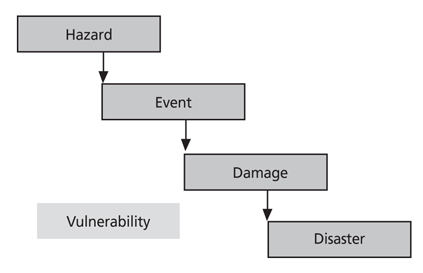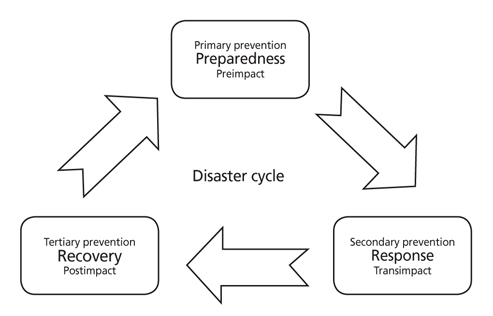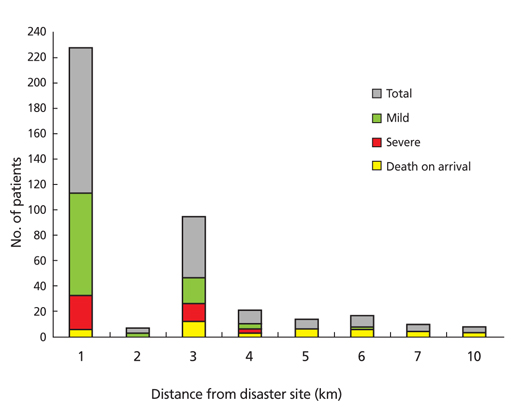J Korean Med Assoc.
2014 Dec;57(12):985-992. 10.5124/jkma.2014.57.12.985.
Principles and system of disaster medicine
- Affiliations
-
- 1Department of Emergency Medicine, Hallym University College of Medicine, Seoul, Korea. erwsj@chol.com
- KMID: 1736626
- DOI: http://doi.org/10.5124/jkma.2014.57.12.985
Abstract
- For adequate disaster preparation and response, the capacity of various sectors should be integrated harmoniously into a single system. Investment must be made in disaster medical care for emergencies and safety issues that address the most important priority - conservation of life. Specifically, support for disaster base hospital is necessary for a hospital to perform an adequate role in disaster, and it is also necessary to assign the role of disaster base hospital to hospitals in areas that contain local risk factor. Because of the problems for nuclear, chemical or biological disaster preparedness in Korea, important things to consider are the preparation and establishment of an infrastructure based on equipment and facilities, including personal protective equipment, decontamination equipment and facilities. Governments should support the operation of disaster medical assistance teams in order to improve the disaster medical system.
Keyword
MeSH Terms
Figure
Cited by 3 articles
-
Review on the current reformation of the physician surcharge in Korea
Jong-Koo Lee
J Korean Med Assoc. 2015;58(4):264-270. doi: 10.5124/jkma.2015.58.4.264.Disasters and the disaster medicine
Chu Hyun Kim, Eunseog Hong
J Korean Med Assoc. 2019;62(5):247-251. doi: 10.5124/jkma.2019.62.5.247.Emergency Medicine in Disasters
Soon-Joo Wang
Hanyang Med Rev. 2015;35(3):124-130. doi: 10.7599/hmr.2015.35.3.124.
Reference
-
1. Kim SK. Disaster medicine. J Korean Soc Emerg Med. 1996; 7:319–325.2. Ko HJ, Lee KH, Kim OH, Cha YS, Cha KC, Kim H, Hwang SO, Ahn ME, Cho JW. Experiences of a disaster medical assistant team in the Chun-cheon landslide disaster. J Korean Soc Emerg Med. 2013; 24:493–499.3. Ahn ME. Disaster associated law and emergency medical system. J Korean Med Assoc. 2001; 44:603–611.4. Baek KJ, Hong YS. Current status of korean disaster medicine: analysis of railroad collapsed accident of gupo. J Korean Soc Emerg Med. 1993; 4:40–46.5. Jacobs LM Jr, Goody MM, Sinclair A. The role of a trauma center in disaster management. J Trauma. 1983; 23:697–701.
Article6. Ahn ME, Hwang SO, Lim KS, Kang SJ. Analysis of Korean disaster plan with the review of three cases of disasters. J Korean Soc Emerg Med. 1993; 4:27–39.7. Korea Center for Disease Control and Prevention. Epidemiologic research of disaster and mass casualty incident in Korea [Internet]. cheongj: Korea Center for Disease Control and Prevention;2014. cited 2014 Aug 15. Available from: http://www.cdc.go.kr/CDC/info/CdcKrInfo0301.jsp?menuIds=HOME001-MNU1132-MNU1138-MNU0037-MNU1380&cid=12594.8. Japan Humanitarian Medicine Association. Disaster medicine. Tokyo: Minamiyama Publishing;2009.9. Lim KS. Hospital disaster plan and disaster medicine. J Korean Med Assoc. 2014; 57:732–734.
Article10. Tierney KJ, Lindell MK, Perry RW. Facing the unexpected: disaster preparedness and response in the United States. Washington, DC: Joseph Henry Press;2001.11. National Research Council. Facing hazards and disasters: understanding human dimensions. Washington, DC: National Academies Press;2006.12. Lim KS, Hwang SO, Ahn ME, Ahn HC. Disaster medicine. Seoul: Kunja Publishing;2009.13. Krenzelok EP, Allswede MP, Mrvos R. The poison center role in biological and chemical terrorism. Vet Hum Toxicol. 2000; 42:297–300.14. Park TJ, Kim WJ, Yun JC, Oh BJ, Lim KS, Lee BS, Lim TH, Lee JB, Hong ES. Emergency medical centers preparedness for a biological disaster in Korea. J Korean Soc Emerg Med. 2008; 19:263–272.15. Kondo H, Koido Y, Morino K, Homma M, Otomo Y, Yamamoto Y, Henmi H. Establishing disaster medical assistance teams in Japan. Prehosp Disaster Med. 2009; 24:556–564.
Article16. Kang S, Yun SH, Jung HM, Kim JH, Han SB, Kim JS, Paik JH. An evaluation of the disaster medical system after an accident which occurred after a bus fell off the Incheon bridge. J Korean Soc Emerg Med. 2013; 24:1–6.17. Holloway RM. Medical disaster planning. II. New York City's preparations. N Y State J Med. 1971; 71:692–694.18. Haynes BE, Freeman C, Rubin JL, Koehler GA, Enriquez SM, Smiley DR. Medical response to catastrophic events: California's planning and the Loma Prieta earthquake. Ann Emerg Med. 1992; 21:368–374.
Article19. Ammons MA, Moore EE, Pons PT, Moore FA, McCroskey BL, Cleveland HC. The role of a regional trauma system in the management of a mass disaster: an analysis of the Keystone, Colorado, chairlift accident. J Trauma. 1988; 28:1468–1471.
Article20. Smith JS Jr, Fisher JH. Three mile island. The silent disaster. JAMA. 1981; 245:1656–1659.
Article21. Baek KJ, Hong YS. Current status of Korean disaster medicine: analysis of railroad collapsed accident of gupo. J Korean Soc Emerg Med. 1993; 4:40–46.22. Benson M, Koenig KL, Schultz CH. Disaster triage: START, then SAVE. A new method of dynamic triage for victims of a catastrophic earthquake. Prehosp Disaster Med. 1996; 11:117–124.
Article




